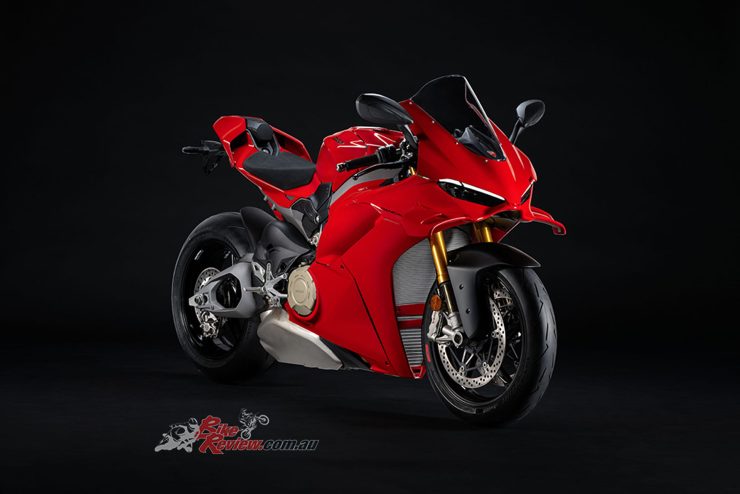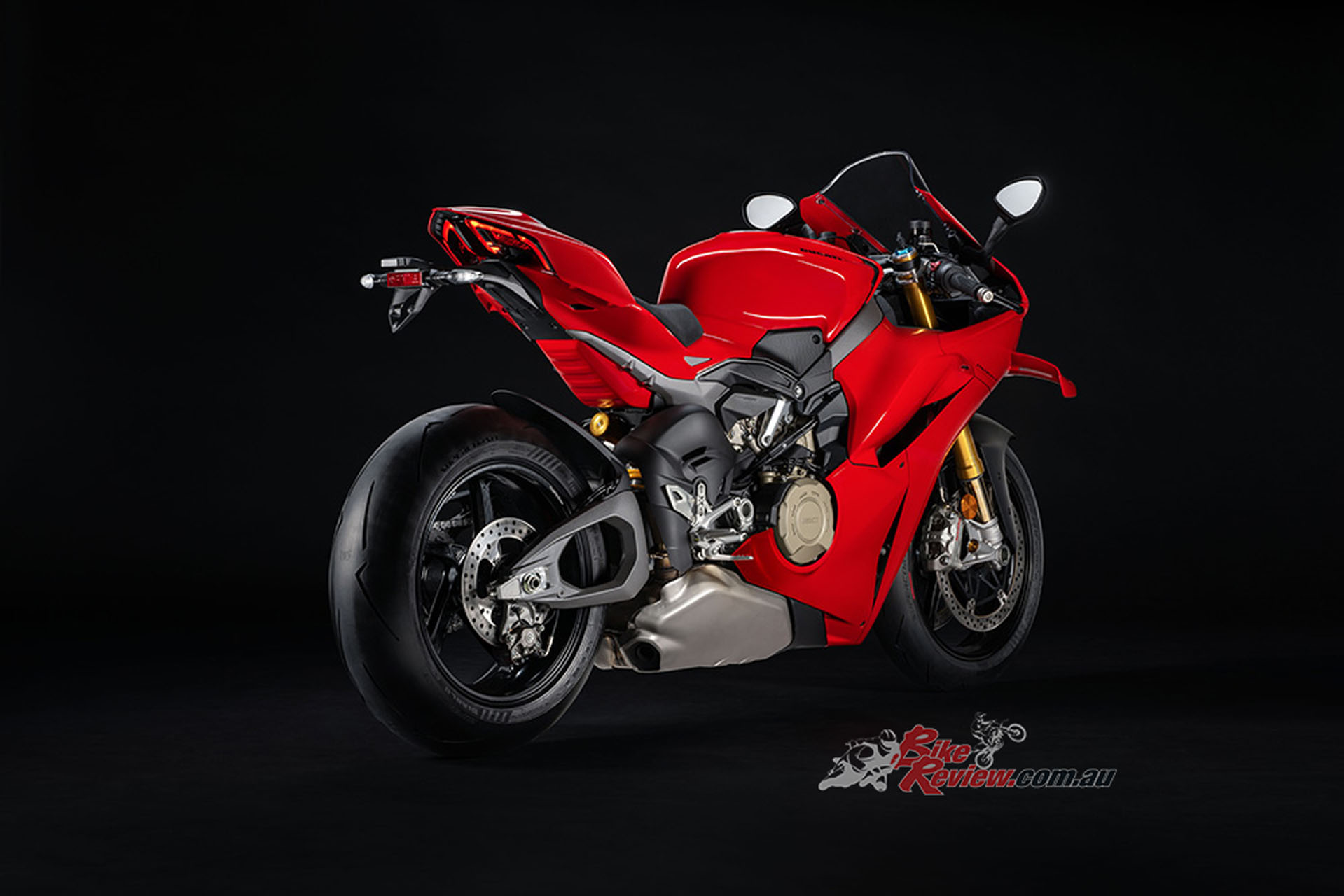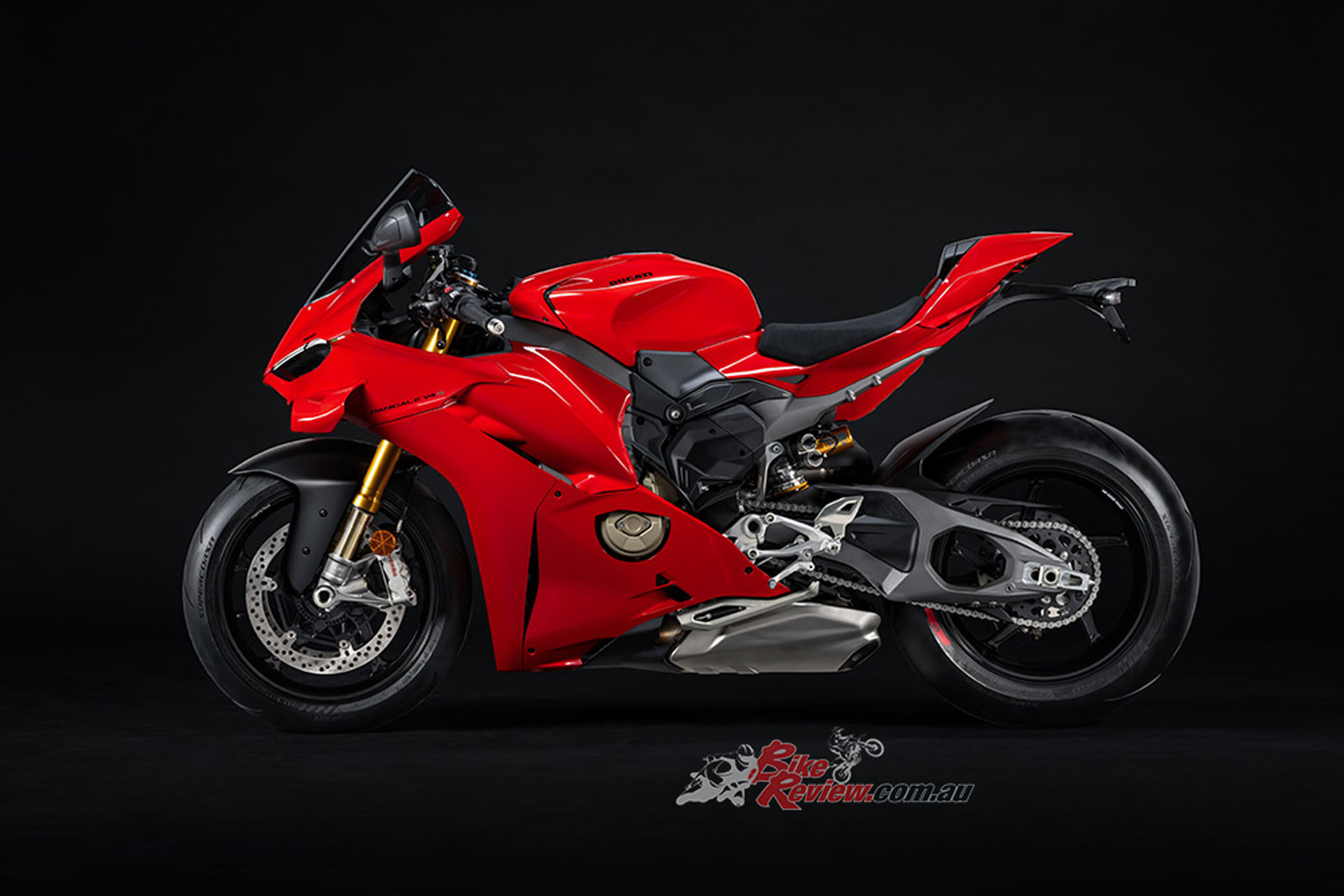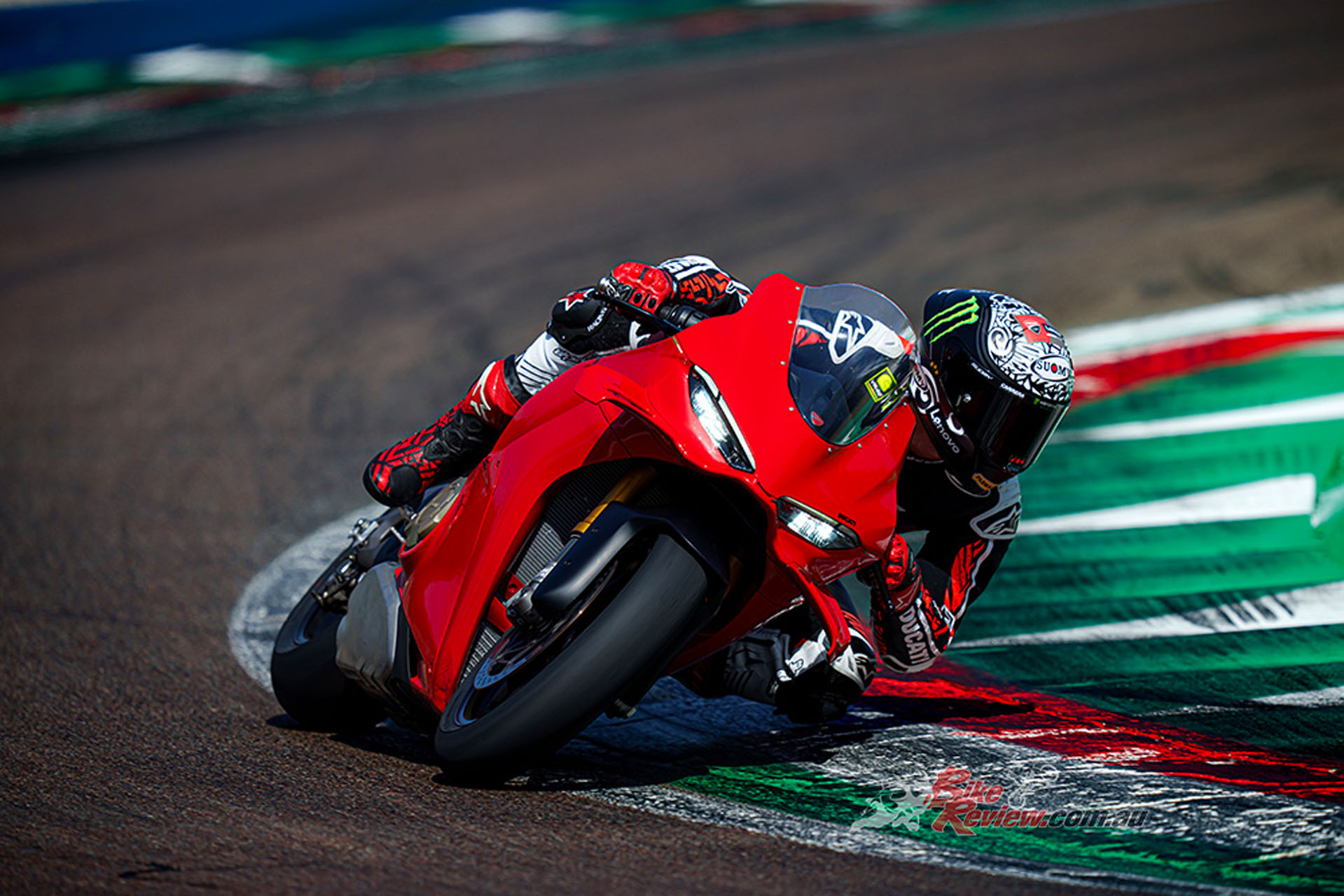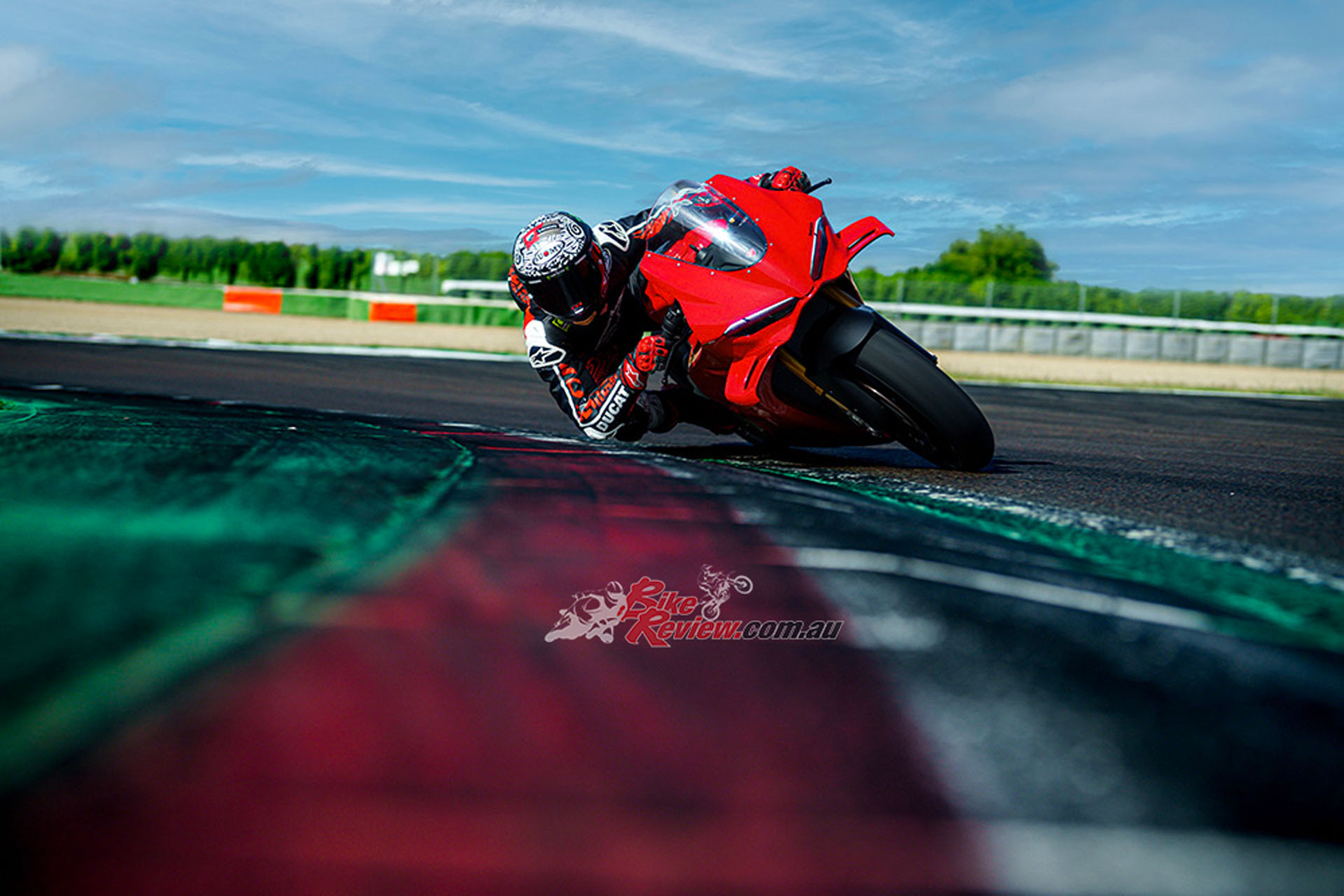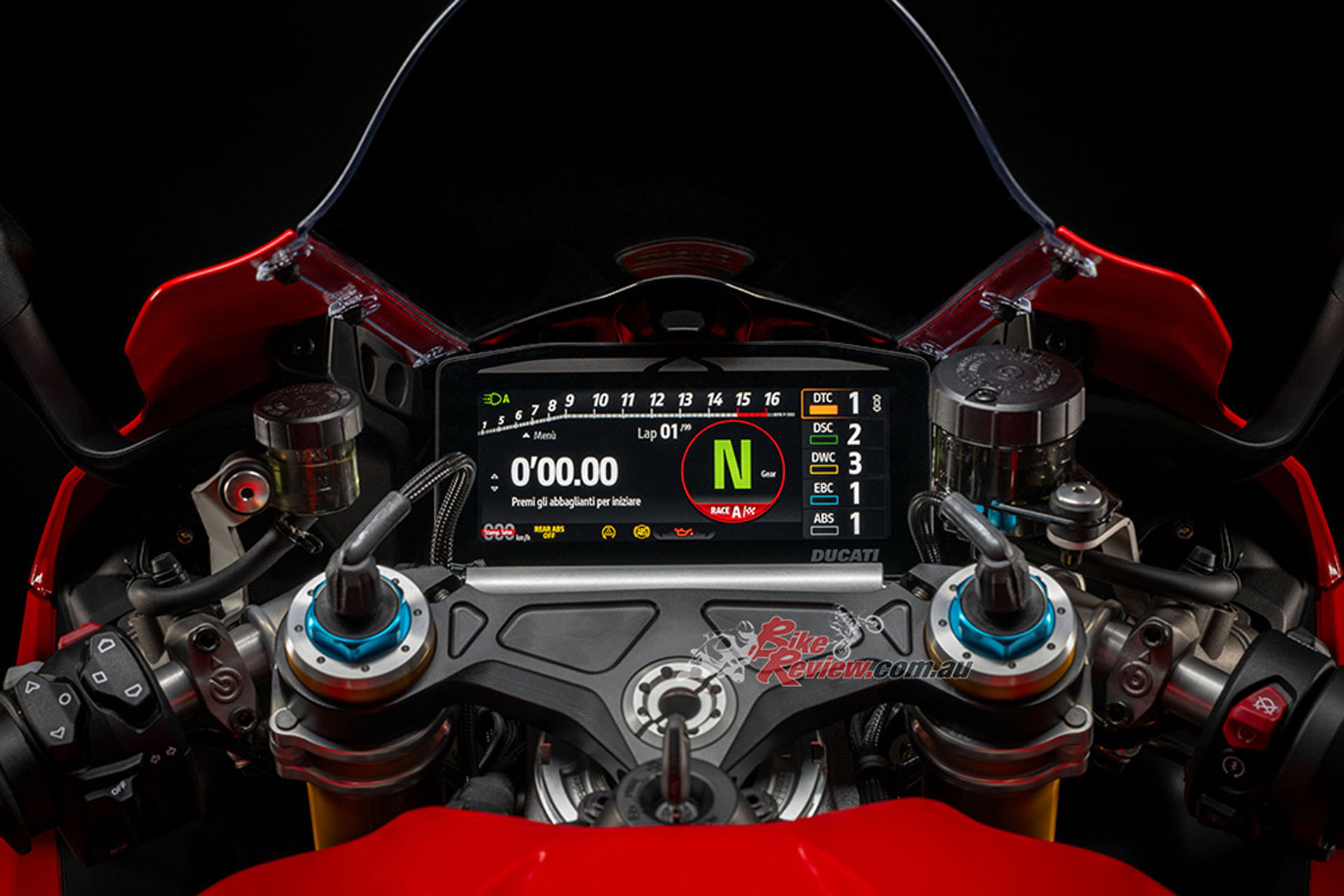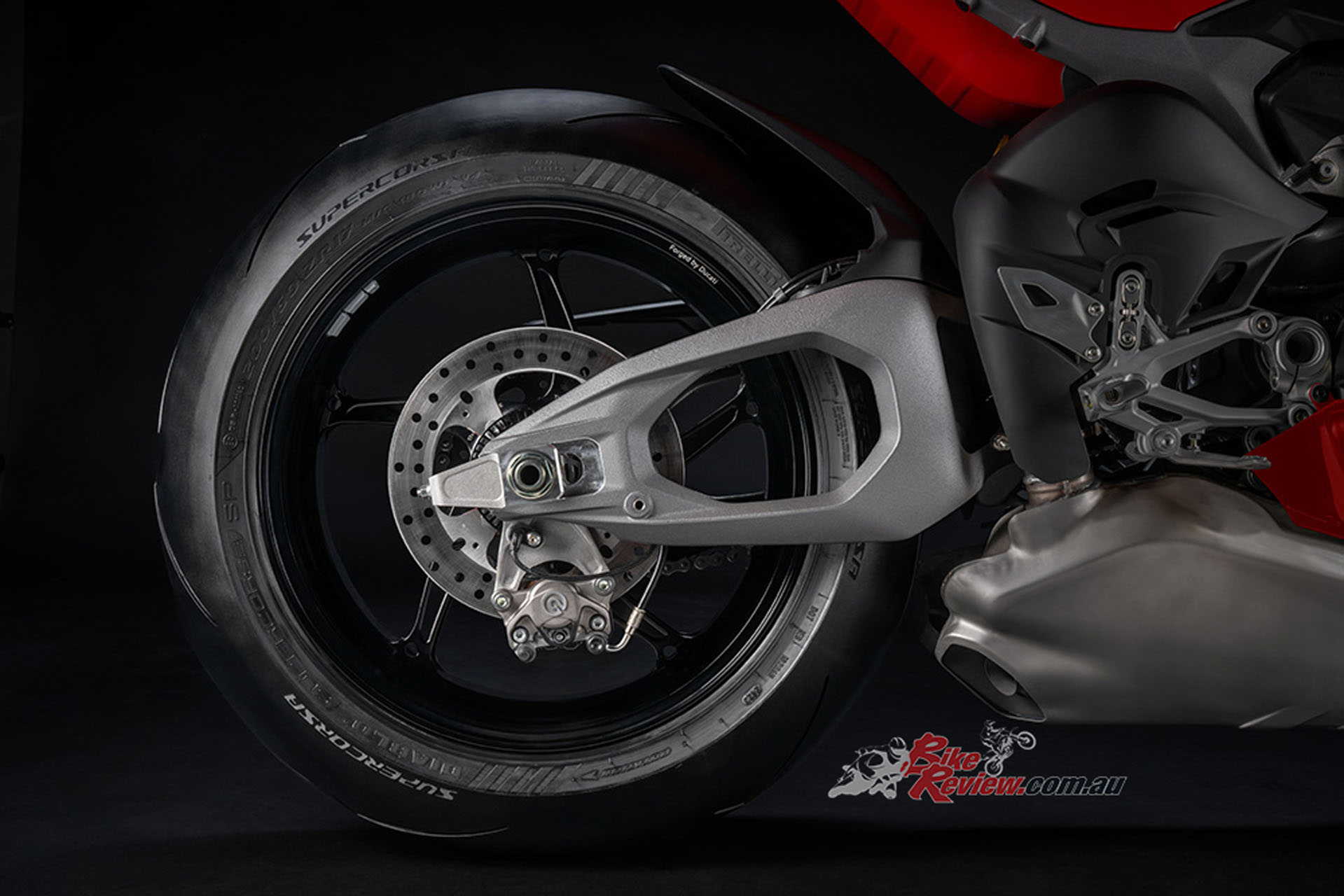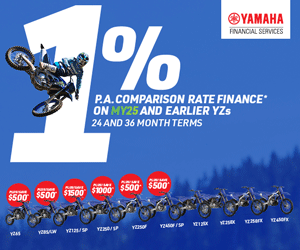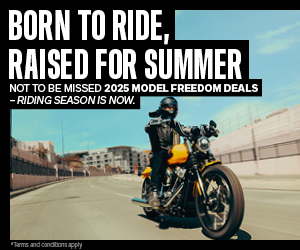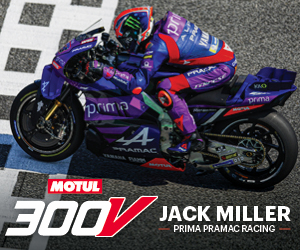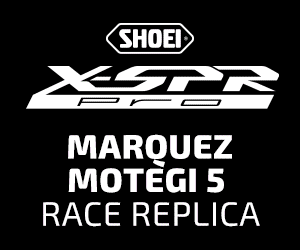New 216 horsepower Ducati Panigale V4 revealed
The new Panigale V4 has undergone a complete rethink in terms of design, technical base and ergonomics. A development that takes full advantage of the benefits deriving from the evolution of tyres, aerodynamics and electronics, thanks also to the experience of Ducati Corse. Press: Ducati ANZ.
The new Panigale V4 S weighs just 187kg, two less than the previous model, and gains 0.5hp despite the more restrictive Euro5+ homologation. The technological innovations with which it is equipped, combined with these improvements, allowed a panel of riders of different abilities – from the fast amateur to the professional rider – to lower their best time by one full second during a comparative test carried out on the circuit of Cremona.
The new fairing reduces aerodynamic resistance by 4 per cent and protects the rider more effectively in a straight line. The high-efficiency double-profile wings are perfectly integrated with the shapes of the front, maintaining the contribution in terms of downforce unchanged compared to the previous model. Moving back the leading edge of the fairing with respect to the front wheel makes the bike nimbler when changing direction at speed, while the improvement in the shape of the mudguard and the conveyor upstream of the radiators increases the effectiveness of the cooling system, particularly the oil cooler.
The Desmosedici Stradale engine, Euro5+ homologated, delivers 216hp at 13,500rpm and a maximum torque of 12.3Kgm at 11,250rpm
To design the new Panigale V4, the Centro Stile Ducati was inspired by the legendary Ducati 916. The designers’ objective was to take inspiration from the iconic motorcycle of the Borgo Panigale company and integrate the ergonomic and aerodynamic solutions of the Desmosedici GP, necessary to satisfy the current riding style on track. The side view of the new Panigale V4 finds that balance between front and rear typical of the 916, with a more horizontal general layout and more like that of the MotoGP bikes of recent years.
The riding position of the new Panigale V4 was developed with the dual objective of guaranteeing maximum integration of the rider into the aerodynamics of the motorcycle and improving control of the vehicle in the most important phases of riding on the track. The seat-tank assembly, thanks to greater roominess, offers more freedom of longitudinal movement and facilitates positioning in the fairing, also thanks to a deep recess in the upper part which avoids interference with the chin guard of the helmet.
The Panigale V4, more powerful and lighter than the previous model, was created to give enthusiasts unparalleled sensations. Its engine, the Desmosedici Stradale, is strictly derived from that of the Ducati MotoGP bike, with which it shares numerous technical solutions, starting with the architecture. It is a 90° V4 with desmodromic distribution, counter-rotating shaft and Twin Pulse timing, which gives the Panigale V4 a sound like that of the Desmosedici GP.
On the Desmosedici Stradale of the new Panigale V4 the distribution diagram has been revised, with cams with a different profile and a higher lift value. The alternator and oil pump are the same as the ones mounted on the Panigale V4 R, while the gearbox drum is the one used on the Superleggera V4. The variable length intake horns have a greater excursion, with a value of 25mm in the short configuration (-10 mm) and 80 in the long one (+5 mm).
Check out our Ducati reviews here…
The Desmosedici Stradale engine, Euro5+ homologated, delivers 216hp at 13,500rpm and a maximum torque of 12.3Kgm at 11,250 rpm. Values that increase in track configuration: by adopting the Ducati Performance racing exhaust by Akrapovič the maximum power rises to 228hp.
The Panigale V4 has always been the road supersport bike closest to a MotoGP. In 2022, Francesco Bagnaia recorded a best time of 1m35.8s during the Lenovo Race of Champions, a competition approved by the FMI, on the Misano asphalt. A time less than 4 seconds away from the outright MotoGP race record: 1m31.8s, set by Francesco Bagnaia himself on his Ducati Desmosedici GP.
To make the Panigale V4 even more competitive, Ducati Corse requested new stiffness targets for the frame and swingarm to be able to exploit the full potential of the new slick tyres used in Superbike.
Ducati Corse engineers defined the optimal lateral stiffness to maintain grip at lean angles now over 60°, while at the same time maintaining high longitudinal stiffness values to exploit the engine torque during acceleration and braking power when braking.
For this purpose, the Front Frame was modified and a new double-sided swingarm – Ducati Hollow Symmetrical Swingarm – was developed; lightweight and with an innovative design, thanks to a specific geometry, this allowed the position of the silencer under the engine to be maintained, a unique solution in the global panorama of road super sports bikes.
The new swingarm reduces lateral stiffness (-37% compared to the previous single-sided swingarm) and weight thanks to the two large lightening slots, improving traction when exiting corners and the rider’s feeling during acceleration. The swingarm-forged rear rim assembly weighs 2.7 kg less than the previous one and is more effective in putting power to the ground. On the Panigale V4 S, the forged aluminium alloy wheels with five tangential spokes, inspired by those of the Desmosedici GP, weigh only 2.95 and 4.15 kg for the front and rear respectively.
The Front Frame is lighter (3.47 kg compared to the previous 4.2) and has been remodulated in terms of stiffness compared to the previous model (-40% laterally). As a result, it offers even more confidence when leaning and is more effective when it comes to taking the apex and closing the turn. The third generation electronically controlled Öhlins NPX/TTX suspensions of the Panigale V4 S broaden their range of adjustments, offering more comfortable settings for road use and are more effective when riding between the curbs of a circuit. At the same time, the greater speed of the hydraulic valves offers a more precise and accurate response in every riding situation.
The new Ducati Panigale V4 is the first motorcycle in the world equipped with Brembo Hypure front brake calipers. Lighter (-60 grams per pair) and more high performing, the Brembo Hypure calipers disperse the heat generated by braking more effectively, offering more consistent performance, and therefore greater effectiveness for the rider in seeking his own limits.
The constant commitment to electronic innovation led Ducati to develop the Vehicle Observer (DVO). The Ducati Vehicle Observer simulates the input of over 70 sensors, thus refining the electronic control strategies, which can achieve unprecedented effectiveness in series production. The extreme precision of this functionality in fact allows the controls to intervene in an almost predictive manner to promptly satisfy the rider’s requests in the search for maximum performance.
The 2025 Panigale V4 is equipped with a complete package of electronic controls: Ducati Traction Control DVO, Ducati Slide Control, Ducati Wheelie Control DVO, Ducati Power Launch DVO, Engine Brake Control and Ducati Quick Shift 2.0. The DQS 2.0 system uses a strategy based solely on the angular position sensor of the gear drum, thus being able to use a gear shift rod without microswitches and therefore offering the rider a more direct feeling with reduced travel.
The dashboard is completely new. The dimension of 6.9″ with an 8:3 aspect ratio offers maximum readability without interfering with vision through the windshield in the fairing position. The protective glass uses Optical Bonding technology to ensure optimal readability on a black background even during the day.
The new Panigale V4, offered in single-seater configuration with a passenger kit available as an accessory*, will arrive in dealerships in September 2024.


